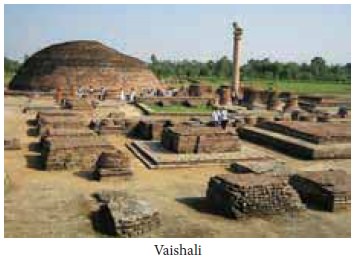History - Developments in the Gangetic Plain | 11th History : Chapter 3 : Rise of Territorial Kingdoms and New Religious Sects
Chapter: 11th History : Chapter 3 : Rise of Territorial Kingdoms and New Religious Sects
Developments in the Gangetic Plain
Developments in the Gangetic Plain
Agriculture improved during this phase of development in the middle Gangetic plains. Wet rice cultivation began to yield more produce of rice than other crops, thus creating the necessary agrarian surplus. Protected irrigation alone was not responsible for the surplus production of rice. Iron technology also played a crucial role. While it is debated whether iron axe aided clearing of the forests or whether iron ploughshare increased agricultural yield, there can be no two opinions that it played a critical role in improving the production of artefacts. The impact of iron technology is better understood if one considers “the technical changes which the introduction of iron implements would have brought about in various craft activities”. Leisure time provided by agricultural surplus and technology led to growth of crafts, which in turn aided vibrant trade.
Second Urbanisation
Agricultural surplus, the growth of crafts and trade, and the growing population led to the emergence of towns in the Gangetic plains. This is called the second urbanisation in Indian history after the first urbanisation evident in the Harappan Civilization. Different types of towns came into being:
(i) Political and administrative centres such as Rajgriha, Shravasti, Kaushambi and Champa
Centres of trade and commerce such as Ujjain and Taxila
Holy centres such as Vaishali.

Related Topics